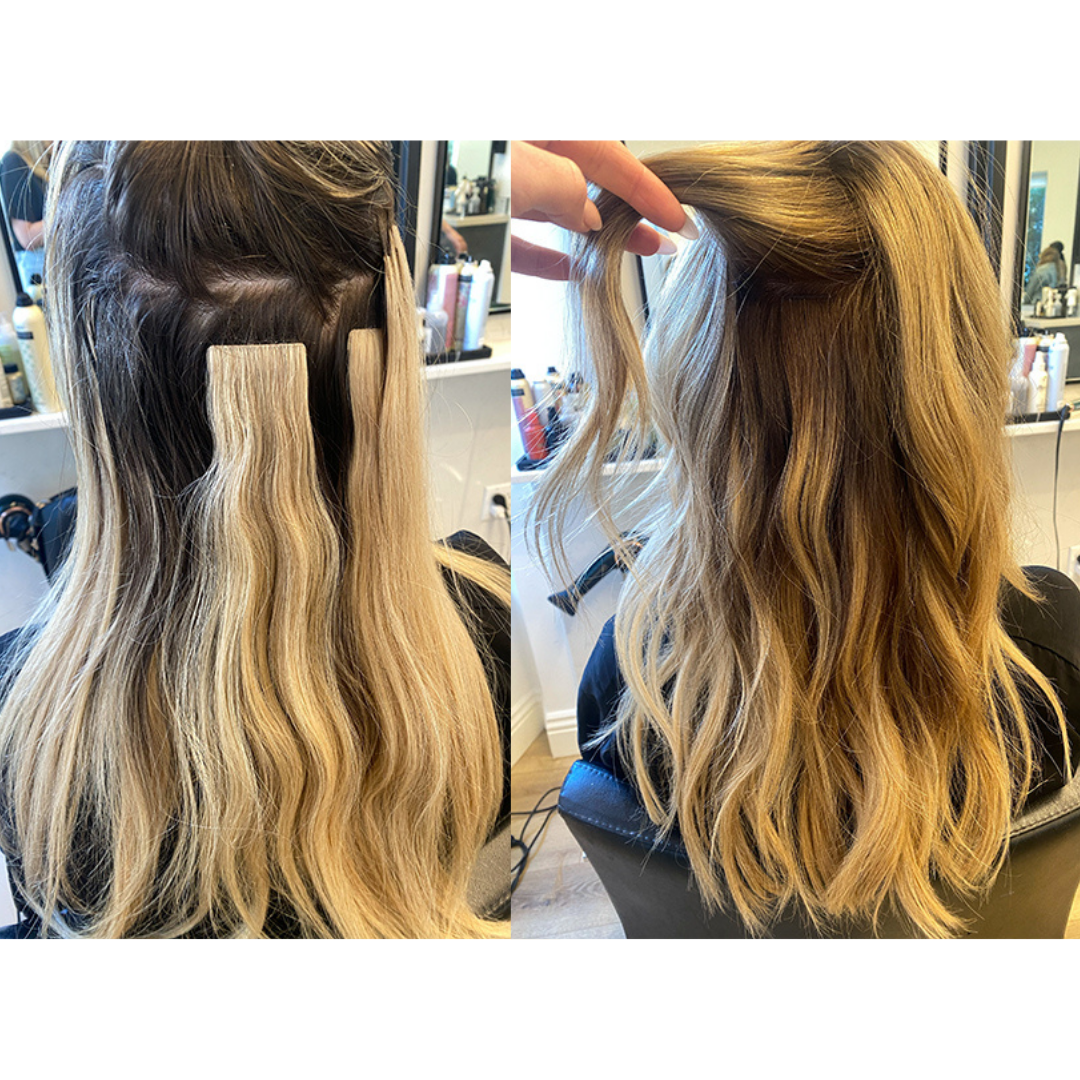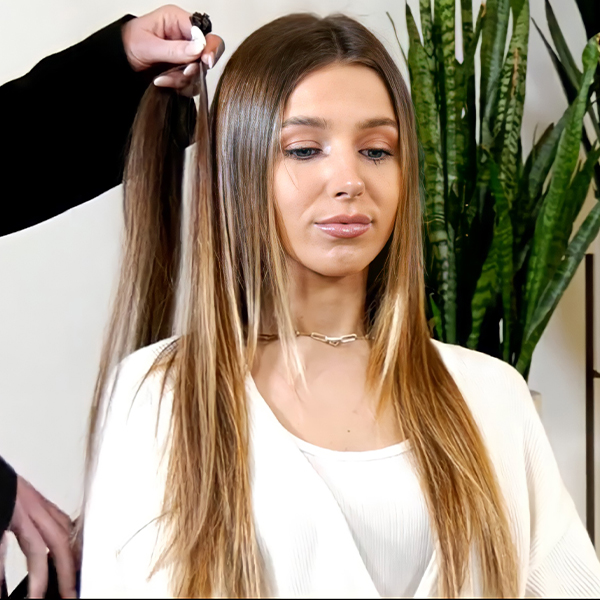Three Things To Avoid When Color Matching Extensions
Whether you have years of experience or you're just stepping into the hair extension game, a bad color match can make or break your application. Learn what celebrity extension specialist Drea Jaclyn (@andreahenty) says are the biggest mistakes she sees when color matching extensions.
1. Choosing Hair Extensions Shades That Are Too Light
Spoiler alert—applying light-colored extensions will not make your client's hair look lighter. Drea explains that clients (blondes especially) will request lighter extensions thinking it will lighten the overall appearance of their hair. While this can be true for specific scenarios, using extensions that are lighter than your client's natural hair color will actually create contrast and do the opposite. "Color match extensions to the client's natural color, not what they want their color to be," says Drea.
Pro Tip: While color matching, pull just a few pieces out of the bundle of extensions to see what the color will truly look like. When the extensions are grouped in a large bundle, colors can be misleading. Lay just a couple of pieces against your client's head to see how the extensions will actually look when distributed.
2. Only Applying One Shade Of Extensions
The goal when color-matching extensions is to mimic your client's natural hair. Almost no one's hair is the same tone from root to end on every strand—extensions should be the same. Choosing a couple of colors, one perfectly matched and one slightly lighter or darker to the client's hair can create a dimensional, natural look.
If your client is asking for a lighter or brighter color—applying more than one shade is the way to do it. Using a shade that matches your client's natural color along with lighter tones will be able to disguise any lines of demarcation for enhanced color.
Check out this color correction from Drea—a great example of why you shouldn't be using one shade of extensions to achieve a lighter color!
 3. Matching Extensions To The Root Color
3. Matching Extensions To The Root Color
Struggling to determine where to begin color matching, especially on a client with a rooty blend?
Here's Drea's trick:
- If your client has a visibly darker root color than their ends, choose extensions that have a gradient similar to their existing color.
- If your client is primarily the same color from root to end, use their ends to color match before looking at the root.
This will help the extensions to blend seamlessly through the ends, aka—where you'll be seeing them the most! Color matching based on client's root color can leave you with extensions that look heavy and obvious through the ends.
Watch Drea's full demo below!



